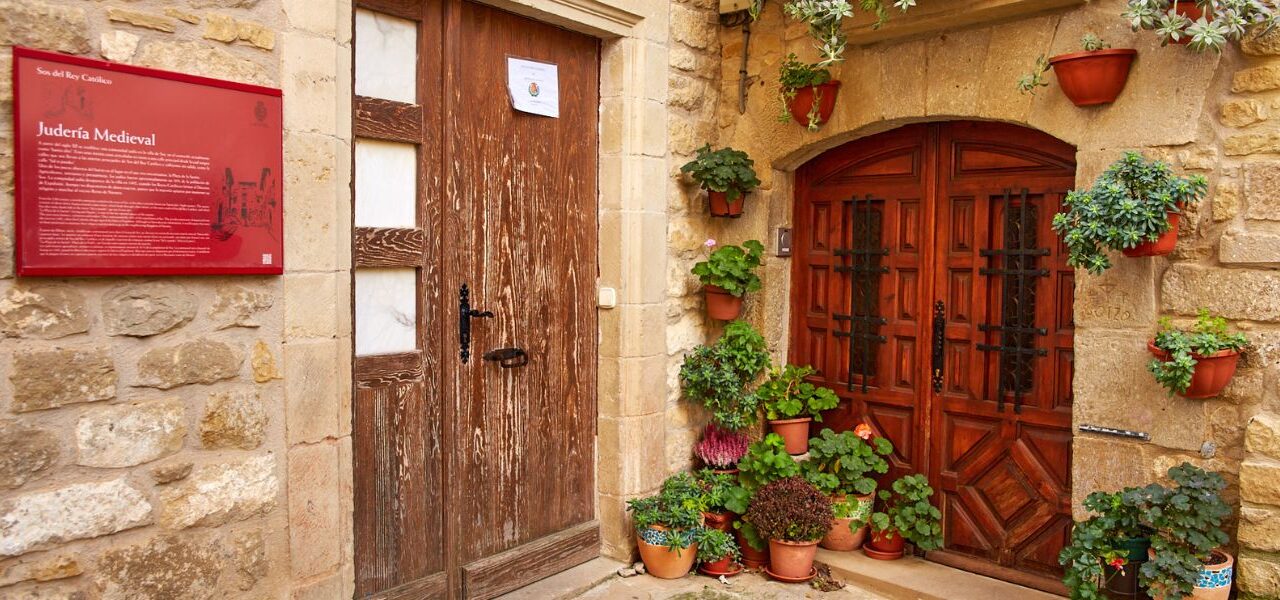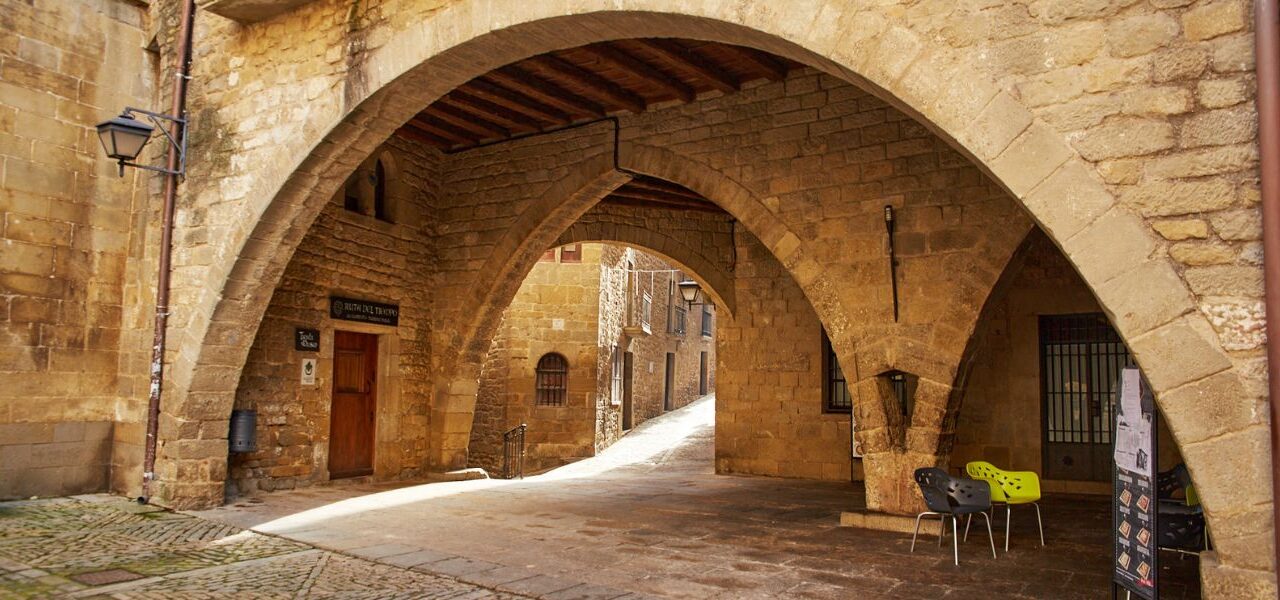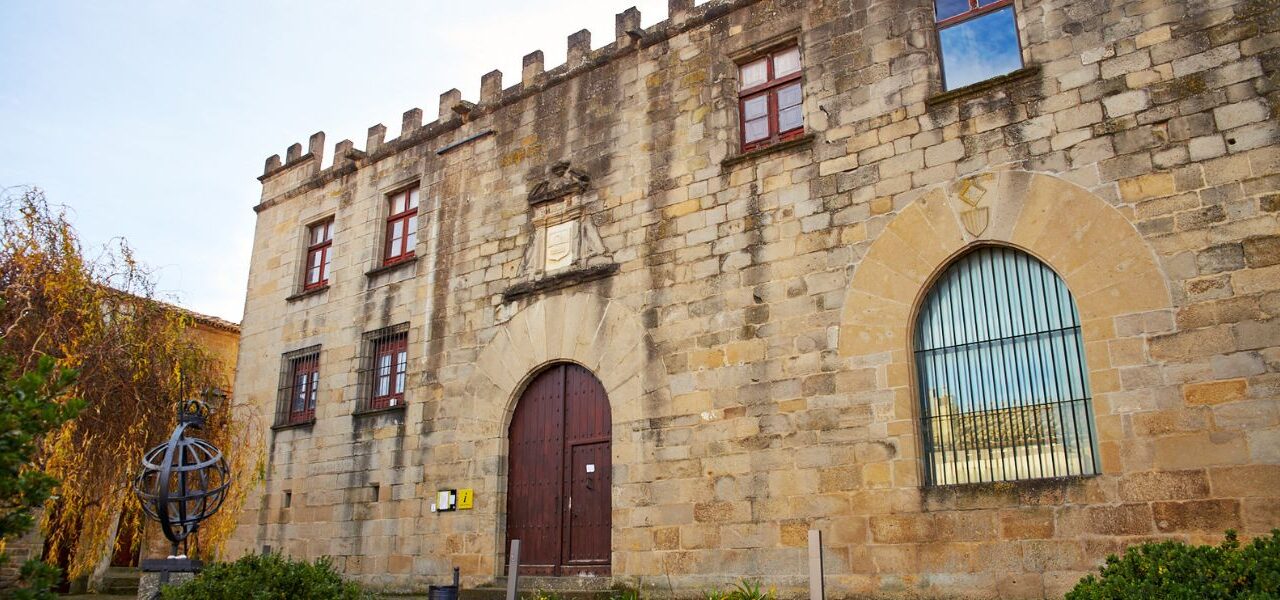Judería – Sos del Rey Católico
Descripción Judería – Sos del Rey Católico En el Aragón medieval se dio una circunstancia particular, que hizo que nuestras ciudades y villas presenten un aspecto tan variado y excepcional: la presencia de minorías raciales y la convivencia entre todos sus pobladores. Así, era habitual encontrar comunidades de hebreos y musulmanes compartiendo una misma villa con pobladores cristianos, en una suerte de convivencia obligada, a veces pacífica, otras en una paz alterada por disturbios. Aunque en las Altas Cinco Villas no quedaron musulmanes tras su temprana conquista, sí que permanecieron los hebreos, conformándose así en parte esencial de la historia de nuestras villas durante siglos. Como judería de Sos, fui una de las más populosas, llegando a albergar un sexto de los habitantes de la población. Me ubicaba en el antiguo Barrio Alto, detrás del Palacio de Sada. Estaba formada por unas treinta casas en torno a una calle principal, desde la que surgían diversos callejones sin salida, llamados callizos, y el edificio de la Sinagoga, hoy convertido en casa rural. En mis calles encontrarás nombres tan sonoros y evocadores como Plaza de la Sartén, Calle Sal si puedes, Túnel del Perdón, Coliseo, Mentidero y La Luna. Incluso algunas casas conservan la mezuzah tapada y la cruz de cristianar, símbolo de la conversión al cristianismo de sus habitantes. Estaba delimitada por portales que cerraban el acceso, teniendo además la salida fuera de las murallas por el Portal de la Reina. Su expulsión en 1492 conllevó la pérdida de una buena parte de la población de la villa, así como un fuerte descenso económico. Su partida hacia la vecina Navarra dejó la villa sumida en un período de tristeza en muchos sentidos, después de tantos años de convivencia pacífica. Por lo tanto, es nuestro deber mantener viva su memoria y su recuerdo en nuestra villa, su paso por nuestra tierra y su gran legado. In medieval Aragon there was a particular characteristic that gave our towns and villages a different and unique appearance: the presence of racial minorities and the coexistence of the inhabitants in these towns. It was common to find communities of Jews and Muslims living alongside Christians, in a sort of forced coexistence that was sometimes peaceful and sometimes fractioned. Although there were no Muslims left in the Altas Cinco Villas after its early conquest, the Hebrews stayed on, becoming an essential part of the history of our towns for centuries. The Judería in Sos was one of the most populous, hosting one sixth of the town’s residents. I was located in the old Barrio Alto, behind the Palacio de Sada. I was formed of thirty houses, all built around a main street, where there are several dead-end streets, called callizos, and the Synagogue, now turned into a country house. My streets have remarkable and evocative names such as the Plaza de la Sartén, Calle Sal Si Puedes, Túnel del Perdón, Coliseo, Mentidero and La Luna. Some houses even preserve their covered mezuzah and their Christian cross, which represents the conversion to Christianity made by local residents. I am surrounded by walls and gates that closed off access with there also being an exit through the walls using the Portal de la Reina. The expulsion of the Jewish population in 1492 meant that a large part of the town’s population was lost, resulting in a strong economic decline. Their departure to the neighbouring Navarre left the town in a period of depression after a long period of peaceful coexistence. It is therefore our duty to keep their memory alive in our town, as their settlement in our land left a great legacy. Dans l’Aragon médiéval, une circonstance particulière s’est produite, conférant aux villes et villages du coin un aspect si varié et exceptionnel : la présence de minorités raciales et la coexistence entre les peuples. Ainsi, il était courant de trouver des communautés de juifs et de musulmans partageant le même village avec des colons chrétiens, dans une sorte de coexistence forcée, parfois pacifique, parfois troublée par les mésententes. Bien qu’aucun musulman ne soit resté dans les Altas Cinco Villas après leur première conquête, les Juifs restèrent, formant ainsi une partie essentielle de l’histoire de nos villages pendant des siècles. En tant que juiverie de Sos, j’hébergeais l’une des plus vastes communautés juives, qui représentait un sixième de la population du village. J’étais située dans l’ancien Barrio Alto, derrière le Palacio de Sada. J’étais composée d’une trentaine de maisons organisées autour d’une rue principale, d’où partaient diverses impasses appelées callizos, et du bâtiment de la Synagogue, aujourd’hui transformée en maison rurale. Mes rues portent des noms évocateurs tels que Plaza de la Sartén, Sal Si Puedes, Túnel del Perdón, Coliseo, Mentidero et La Luna. Certaines maisons conservent même la mezouza couverte et la croix chrétienne, symbole de la conversion au christianisme de ses habitants. J’étais délimitée par des portails qui fermaient l’accès à mon quartier, et la sortie de la ville fortifiée se faisait par le Portal de la Reina. L’expulsion de la communauté juive en 1492 entraîna la perte d’une bonne partie de la population de ma cité, ainsi qu’un fort déclin économique. Leur départ pour la Navarre voisine a plongé la ville dans une période de tristesse à bien des égards, après de longues années de coexistence pacifique. Par conséquent, il est de notre devoir de faire vivre la mémoire de leur passage sur nos terres et de l’héritage important qu’ils ont laissé. Descargar PDF accesible Foto a Foto Vídeo en lengua de signos Compartir




